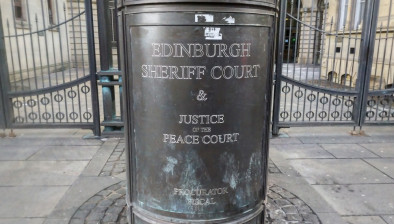Blog: Scottish courts reconsider the correct legal test for rectification of contract
 Gareth Hale and Louise McDaid write about Briggs of Burton Plc v Doosan Babcock Limited, in which they acted for the defender.
Gareth Hale and Louise McDaid write about Briggs of Burton Plc v Doosan Babcock Limited, in which they acted for the defender.
Rectification is a remedy in Scots law that enables a document which does not accurately reflect the common intention of the parties to be altered retrospectively by the court.
Lord Tyre’s decision yesterday in Briggs of Burton Plc v Doosan Babcock Limited [2020] CSOH 100 will make it harder for a contracting party to rectify an agreement where the common intention that is relied upon is expressed in a non-binding prior agreement, such as heads of terms. The decision, correctly in the authors’ view, recognises the commercial reality that a party may simply have changed its mind on the terms of the agreement.
The parties’ agreement
Briggs of Burton Plc v. Doosan Babcock Limited is an action for rectification of a sub-lease of commercial premises. The head-tenant and prospective sub-tenant entered into heads of terms for the subletting of the premises. The heads of terms were non-binding and subject to the conclusion of missives incorporating a sub-lease.
After entering into the heads of terms, the head-tenant changed its mind about two matters: (1) the timing of a break option; (2) and responsibility for the maintenance of four cranes. The head-tenant’s solicitors drafted a sub-lease incorporating those changes but without expressly flagging that they were departing from the heads of terms. During the drafting process, the sub-tenant’s solicitors noticed one of the departures from the heads of terms but did not expressly draw their client’s attention to it.
After months of negotiations, and various iterations of the drafts, missives were ultimately concluded for the grant of a sub-lease incorporating the head tenant’s revised instructions. The sub-tenant subsequently became aware that the terms of the sub-lease departed from the heads of terms and sought rectification of the sub-lease to bring it into line with the heads of terms.
The test for rectification
The sub-tenant sought rectification of the sub-lease in terms of section 8(1)(a) of the Law Reform (Miscellaneous Provisions) (Scotland) Act 1985. Section 8(1) provides that:
“…where the court is satisfied, on an application made to it, that—
(a) a document intended to express or to give effect to an agreement fails to express accurately the common intention of the parties to the agreement at the date when it was made;
…
it may order the document to be rectified in any manner that it may specify in order to give effect to that intention.”
Lord Tyre was faced with identifying the test that applies when a document is alleged by one party to fail to express a common intention in a non-binding prior agreement. The particular issue was whether the subjective intention of the parties is a relevant factor, particularly evidence showing that the head-tenant did not intend for the sub-lease to give effect to all areas of agreement contained in the heads of terms. When considering claims for rectification of documents, Scottish judges have traditionally focused on the common intention of the parties objectively ascertained, usually by reference to communications between the parties.
The correct approach to identifying the intention of the parties is an interesting and timely question. It was considered by the English Court of Appeal earlier this year in the context of the English law of rectification in the case of FSHC Group Holdings Ltd v. GLAS Trust Corporation Ltd [2020] Ch 365. In FSHC, the Court of Appeal held that, when basing a rectification claim on the common intention of the parties, it is necessary to establish the intention of the parties as a subjective state of mind and also show that, as a result of communication between them, the parties understood each other to share that intention. Lord Tyre found the Court of Appeal’s analysis as to the relevance of subjective intention useful in interpreting the requirements of the Scottish test in section 8(1)(a) of the 1985 Act.
Lord Tyre also shared the concerns expressed by the Court of Appeal in FSHC regarding objectively attributing a common continuing intention to parties in circumstances where one of them has, as a matter of fact, changed its mind during the period since entering into an expressly non-binding agreement. The sub-tenant’s contention that an objective test should be applied was therefore rejected. The subjective intention of the head tenant, as expressed in the drafting of the terms of the sub-lease, was the key factor: “In my opinion it is fatal in the present case to the pursuer’s claim for rectification that the terms of the formal documents accurately reflected the subjective intention of the defender, communicated to the pursuer, without any intentional or unintentional concealment, by means of the terms of the draft sublease.” The action for rectification therefore failed.
Meeting the requirements for rectification of a document has always been a challenge for pursuers. It will now become more difficult in cases involving continuing common intention based upon prior non-binding agreements, as we see the courts north and south of the border taking the approach that the written words of a contract should have primacy, except where it can be established – as a matter of subjective intention – that neither party has changed its mind.

Gareth Hale is a partner and Louise McDaid an associate at Dentons









